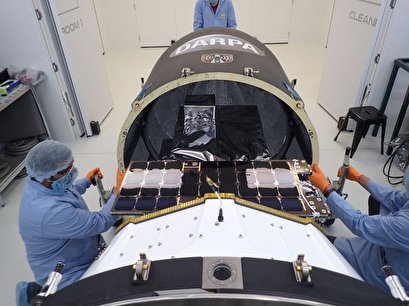 TEHRAN, Young Journalists Club (YJC) -Northrop Grumman completed the construction — from concept to spaceflight — in only 20 months, far shorter than the traditional timeline of years, Northrop Grumman representatives said in a statement. To reach that speed, the company said, the defense agency allowed for "greater levels of risk than is typical for an operational system," according to the statement; DARPA worked with Northrop Grumman to accept fewer requirements, reviews and deliverables during the construction than on a usual project.
TEHRAN, Young Journalists Club (YJC) -Northrop Grumman completed the construction — from concept to spaceflight — in only 20 months, far shorter than the traditional timeline of years, Northrop Grumman representatives said in a statement. To reach that speed, the company said, the defense agency allowed for "greater levels of risk than is typical for an operational system," according to the statement; DARPA worked with Northrop Grumman to accept fewer requirements, reviews and deliverables during the construction than on a usual project.
"Our team's success with the R3D2 program is a strong proof of concept that the rapid development of future space capabilities is possible," Scott Stapp, the company's vice president of resiliency and rapid prototyping, said in the statement. "Taking thoughtful risks and eliminating bureaucracy allowed us to streamline our processes to achieve rapid timelines," he added.
The company plans to partner with the U.S. government, as well as companies large and small, to create fast-construction prototypes and demonstrations related to national-security missions. Northrop Grumman plans "to lead the cultural change necessary in the industry," Stapp added.
The R3D2 satellite is designed to test a new type of space antenna, DARPA officials said before launch on March 28. It includes a paper-thin "membrane reflectarray antenna" made of Kapton, which is supposed to extend as far as 7.3 feet (2.3 meters).
"R3D2 will monitor antenna deployment dynamics, survivability and radio frequency (RF) characteristics of a membrane antenna in low-Earth orbit," DARPA officials said in the statement. "The antenna could enable multiple missions that currently require large satellites, to include high data rate communications to disadvantaged users on the ground."
Source:space